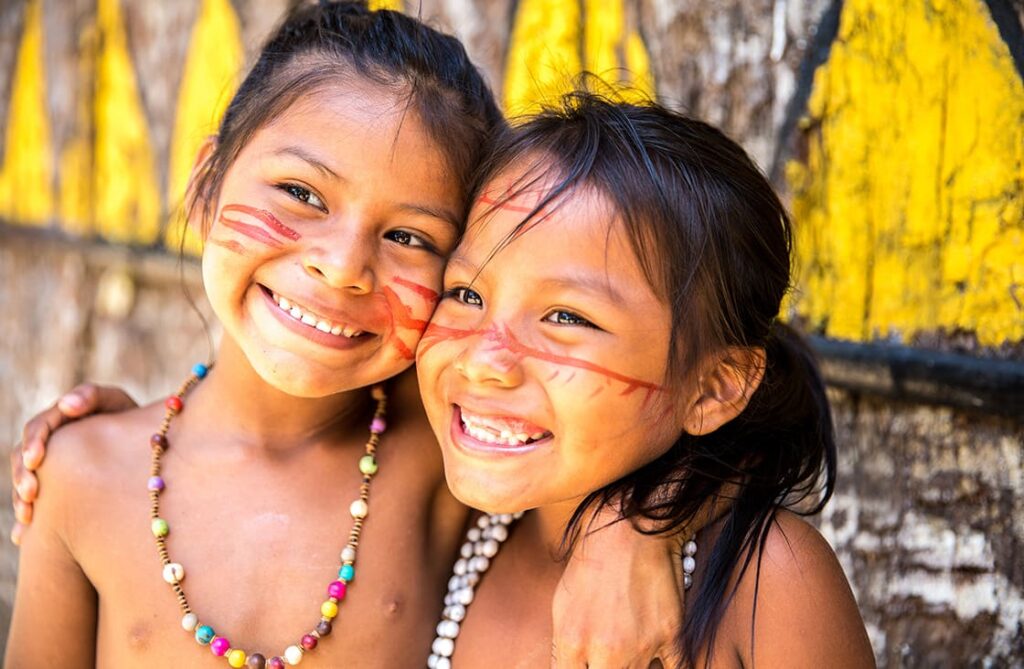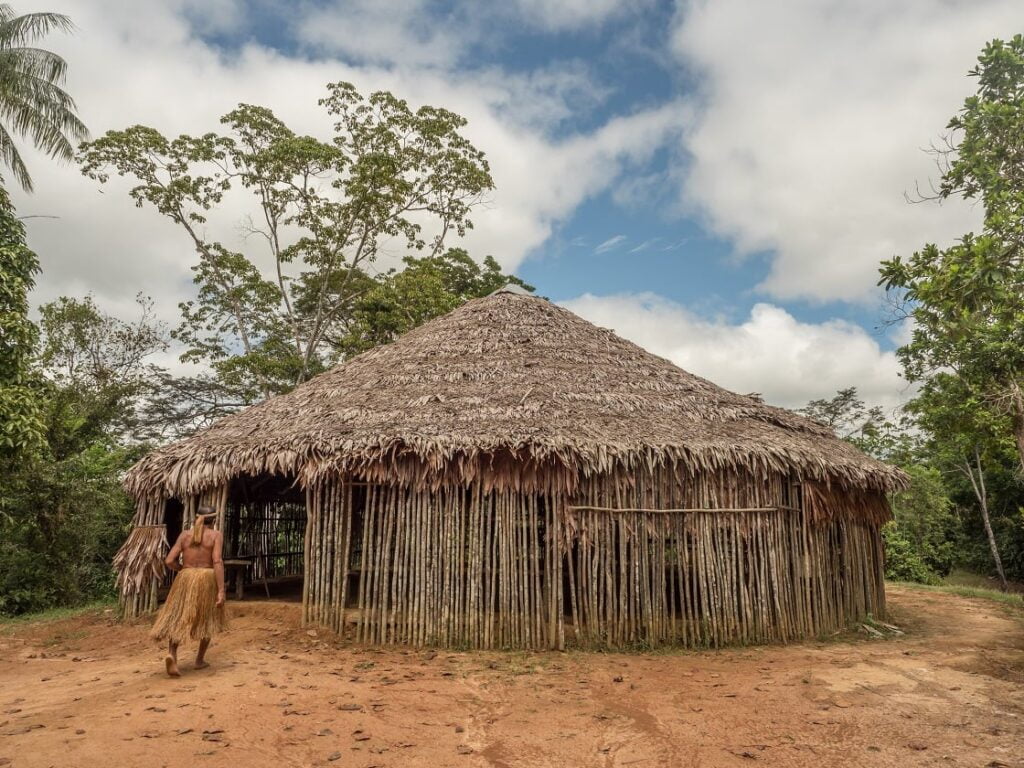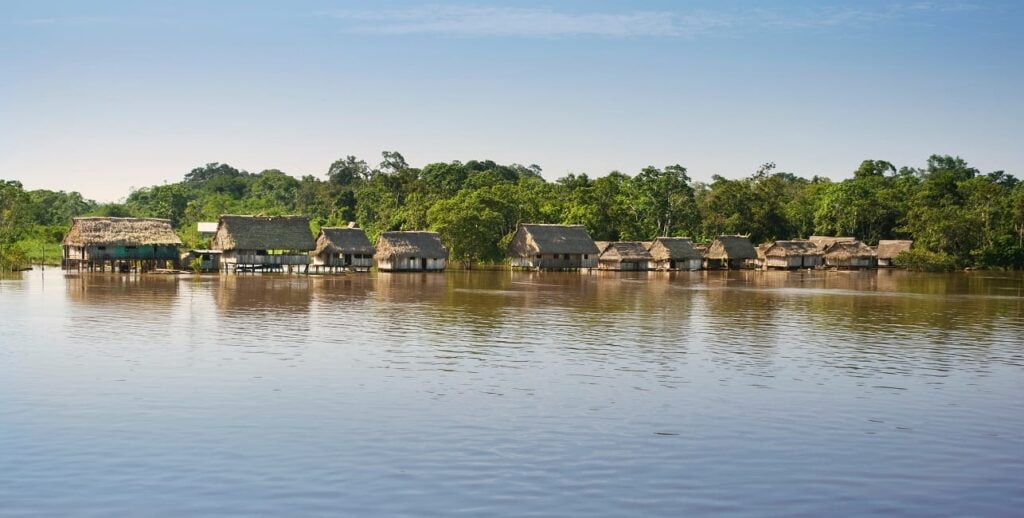The Amazon rainforest, often referred to as the “lungs of the Earth,” is not just a vast expanse of biodiverse wilderness; it’s also home to numerous indigenous tribes whose cultures and traditions are deeply intertwined with the forest’s ecosystem. These tribes, often referred to as “Guardians of the Amazon,” have inhabited these lands for centuries, preserving their rich biodiversity while living in harmony with nature. In this blog, we delve into the lives of these tribes, their unique cultures, and the challenges they face in the modern world. While deforestation threatens their way of life, a new documentary explores how indigenous tribes live in the Amazon Rainforest in harmony with their environment.

These tribes, with their unique languages, traditions, and profound connection to the environment, have thrived for generations as stewards of the rainforest. Today, however, their way of life faces unprecedented challenges.
A Brief History of Indigenous Tribes
- The Amazon has been inhabited by indigenous groups for at least 11,200 years.
- Before European colonization, approximately 6.8 million native people lived in South America.
- Sadly, European diseases like smallpox decimated their population by 90% within the first 100 years of contact.
- Some tribes retreated deep into the rainforest to survive, while others were pushed there due to persecution, slavery, and warfare.
The Indigenous Tribes of the Amazon
Imagine a life where the rustling leaves hold the whispers of ancestral spirits, and the murmuring streams guide your path. This is the reality for many Amazonian tribes. Their societies are often complex, with intricate social structures and a deep understanding of medicinal plants and hunting techniques.
The Amazon rainforest is inhabited by numerous indigenous tribes, each with its own language, customs, and way of life. These tribes include the Yanomami, Kayapo, Ashaninka, and many others, spread across the vast expanse of the rainforest. For generations, these tribes have relied on the forest for food, shelter, and medicine, developing intricate knowledge of its ecosystems and biodiversity.

Cultural Richness and Traditions
The cultures of the indigenous tribes of the Amazon are rich and diverse, with unique traditions that have been passed down through generations. From intricate art and craftsmanship to elaborate rituals and ceremonies, these tribes have a deep connection to their ancestral heritage and the natural world around them. For example, the Yanomami people are known for their intricate body painting and shamanic rituals, while the Kayapo are renowned for their vibrant festivals and ornate headdresses.
Challenges and Threats
Despite their deep-rooted connection to the land, indigenous tribes in the Amazon face numerous challenges and threats to their way of life. Deforestation, illegal logging, and land encroachment by mining and agricultural activities pose significant threats to their ancestral territories and the biodiversity of the rainforest. Additionally, diseases introduced by outsiders, such as COVID-19, have had devastating effects on indigenous communities with limited access to healthcare.
The destruction of their habitat disrupts their traditional way of life, forcing them to relocate and struggle to find food and resources. Moreover, contact with the outside world can introduce diseases and social conflicts, jeopardizing their well-being and cultural integrity.
Modern Challenges and Adaptations
- Protected Areas: Most native Amazonians live in protected areas called indigenous lands. Here, they blend traditional and modern practices.
- Urban Adaptation: Some tribes near cities engage in tourism, trade at local markets, sell handicrafts, and use Western clothing and utensils.
- Uncontacted Tribes: These isolated groups remain untouched by the modern world, preserving ancient ways of life.
- Housing: Tribes build communal structures from wood, bamboo, and straw.
- The Amazon basin boasts diverse linguistic families, including Tupí, Ye or Gé, Quechua, Carib, Arawak, Pano-Tacana, and Tucana.
Preserving Indigenous Rights and Territories
In recent years, there has been growing recognition of the importance of protecting the rights and territories of indigenous peoples in the Amazon. International organizations, governments, and environmental activists have been working to support indigenous land rights and empower local communities to defend their territories against external threats. Initiatives such as community-based conservation and sustainable eco-tourism are helping to promote the conservation of the rainforest while supporting the livelihoods of indigenous tribes.
Preserving a Precious Legacy
The Amazonian tribes are not just the guardians of the rainforest, they are living testaments to our own potential for harmonious coexistence with nature. Their knowledge of sustainable practices and their deep respect for the environment hold valuable lessons for the modern world.
There are, however, reasons to be hopeful. Many indigenous tribes are actively fighting for their rights and the protection of their land. They are partnering with conservation organizations and raising awareness about the importance of preserving the rainforest.
The Role of Indigenous Wisdom in Conservation
The indigenous tribes of the Amazon possess invaluable knowledge and wisdom about the rainforest and its ecosystems. Their traditional practices of sustainable resource management and conservation can offer valuable insights for modern conservation efforts. By partnering with indigenous communities and respecting their rights and knowledge, we can work together to protect the Amazon rainforest for future generations.

How You Can Help
There are several ways you can support the Amazonian tribes and the rainforest:
- Educate yourself: Learn more about the tribes and the threats they face.
- Support sustainable practices: Choose products that are rainforest-friendly and avoid those that contribute to deforestation.
- Donate to organizations: Support NGOs working with indigenous communities to protect their land and culture.
- Spread awareness: Talk to your friends and family about the importance of the Amazon rainforest and its people.
Conclusion
The indigenous tribes of the Amazon actively guard one of the most biodiverse regions on Earth, while also serving as custodians of ancient cultures and traditions deeply intertwined with the forest’s ecosystem. As we strive to protect the Amazon rainforest and mitigate the threats of deforestation and climate change, it’s crucial to recognize the rights and knowledge of indigenous peoples and work collaboratively to preserve their way of life and the natural heritage of the Amazon.
Read Also
- Top Tourist Places in Kashmir
- best places to visit in Himachal Pradesh
- Best historical places to visit in India
- Stargazing in India: Top Places to See the Milky Way
- The Sargasso Sea: A Unique Oceanic Marvel
- Gigantic Jets: Electrifying Phenomena Beyond Lightning
- Exploring the Most Remote Cohorts of the World
Frequently Asked Questions (FAQs)
Yes, indigenous tribes continue to inhabit the Amazon rainforest. Approximately 400 tribes call this lush ecosystem home. Some of these tribes are referred to as “uncontacted,” having had little to no interaction with the outside world. They live either in settled villages near rivers or as nomads deep within the forest.
Indigenous groups have inhabited the Amazon for at least 11,200 years.
European colonization led to a significant decline in their population due to diseases like smallpox, measles, and the common cold.
Those who survived either lived deep within the rainforest or were pushed there by European persecution, slavery, and warfare.
Traditionally, most tribes follow a hunter-gatherer lifestyle. They rely on the forest for food, hunting animals, fishing in the rivers, and gathering fruits, vegetables, and nuts. Some tribes also practice slash-and-burn agriculture, cultivating small plots of land for crops like cassava and maize.
Settled villages: Indigenous peoples build settled villages near rivers for easier access to water and transportation. Tribes build communal houses from wood, bamboo, and palm leaves.
Nomadic settlements: Some tribes choose a more mobile lifestyle deep in the rainforest, constructing temporary shelters that they can easily abandon and rebuild as they follow game and resources..
Indigenous tribes in the Amazon rainforest have an intimate knowledge of the forest and its ecosystems, allowing them to navigate through dense vegetation with ease. They often use traditional trails, landmarks, and natural cues such as rivers and mountain ranges to find their way through the forest.







Your article helped me a lot, is there any more related content? Thanks!
Thank you for your sharing. I am worried that I lack creative ideas. It is your article that makes me full of hope. Thank you. But, I have a question, can you help me?
Can you be more specific about the content of your article? After reading it, I still have some doubts. Hope you can help me.
Can you be more specific about the content of your article? After reading it, I still have some doubts. Hope you can help me. https://accounts.binance.com/de-CH/register-person?ref=UM6SMJM3